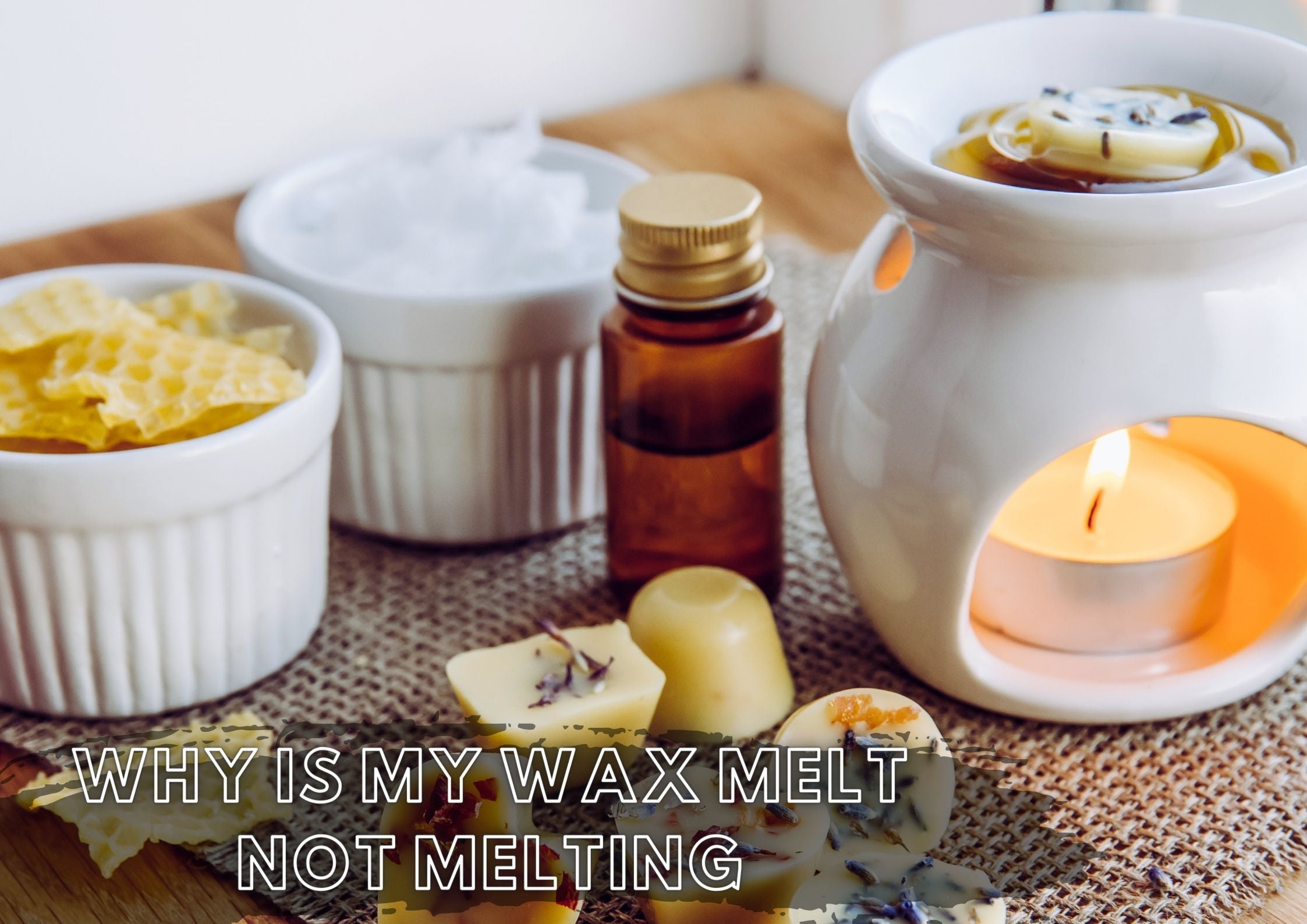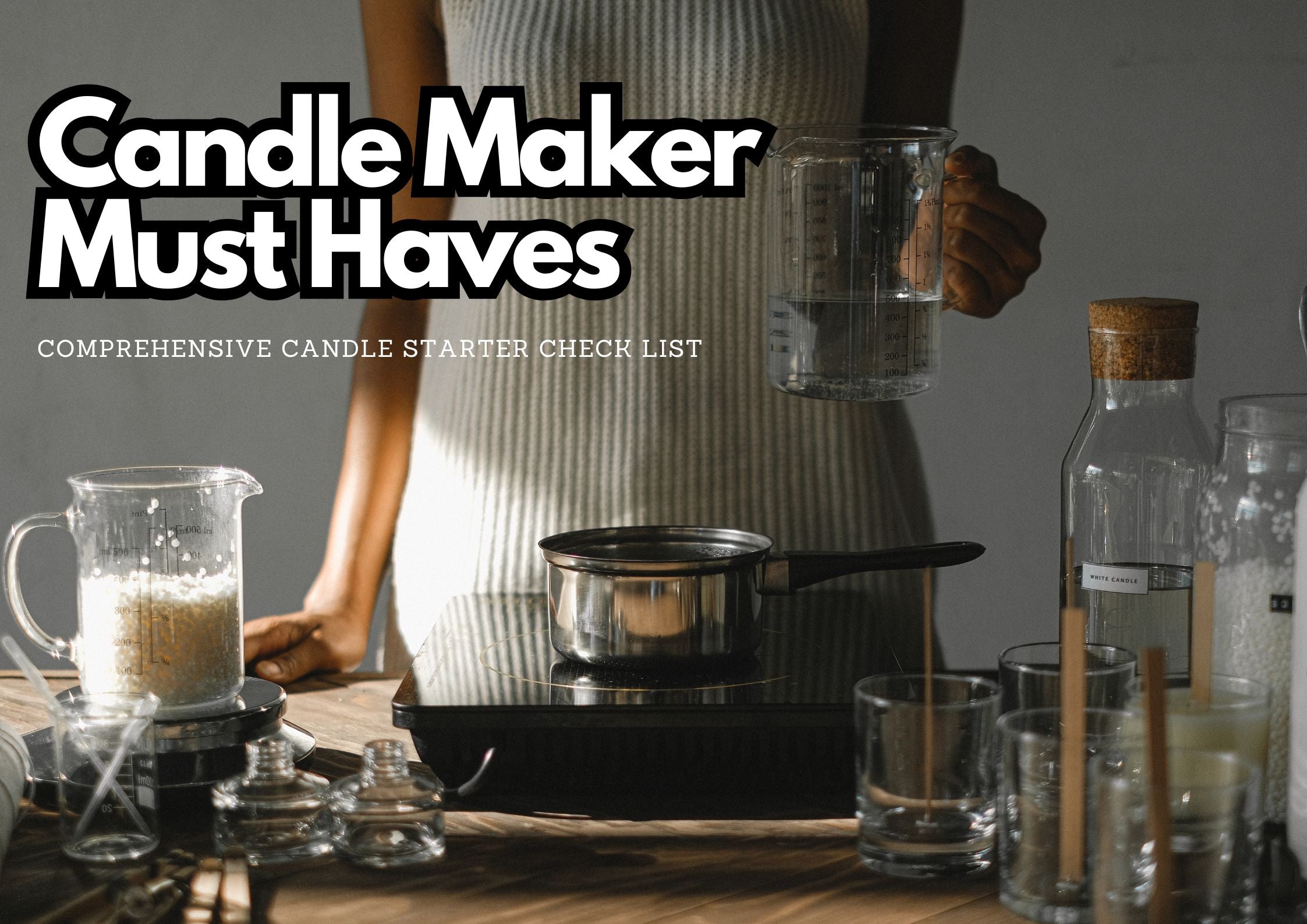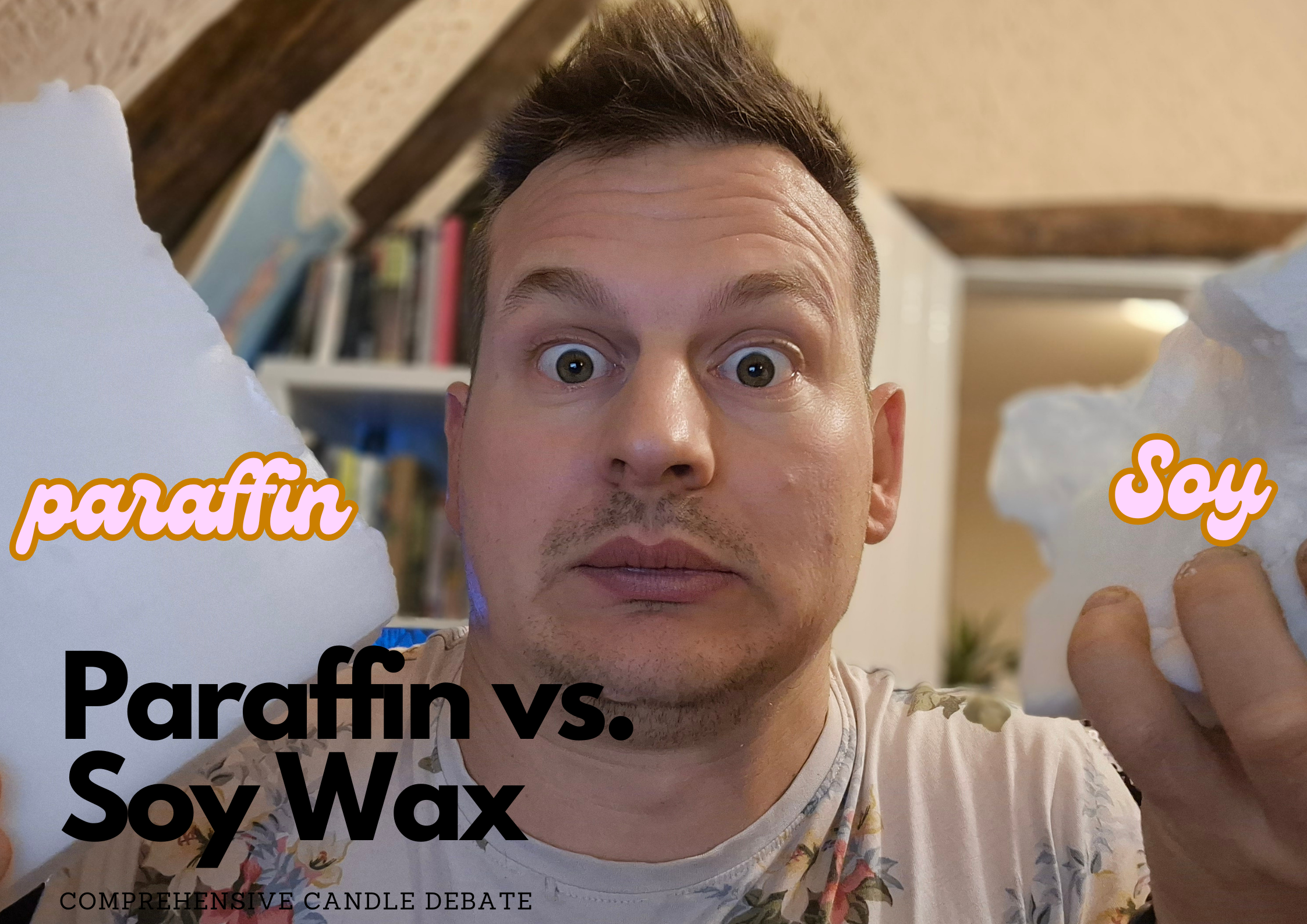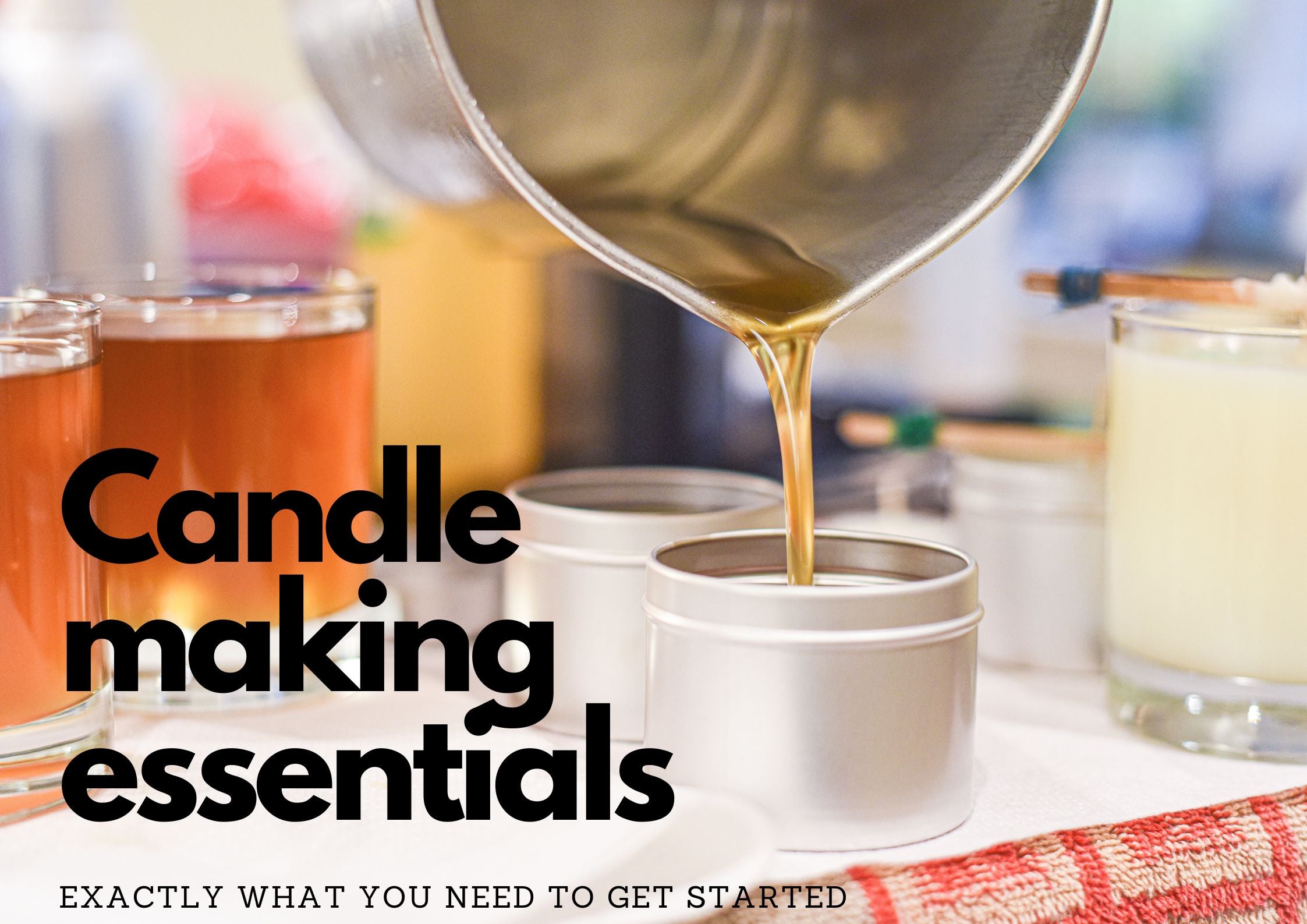Why is my wax melt not melting?
Jan 07 , 2024
Have you ever placed a wax melt in your warmer only to find it stubbornly refusing to turn into the fragrant liquid you expected? Wax melts are designed for easy use, melting slowly to release delightful scents that enhance your living space.
Our blog dives into common issues and offers practical solutions to ensure your wax melts liquefy properly and fill your room with aromatic bliss. Keep reading, and let's get that melt flowing!
Key Takeaways - why is my wax melt not melting
- Your wax melt may not be melting due to the use of low-quality wax, incorrect temperature settings on your warmer, or a wick that isn't burning properly. It's important to choose high-quality melts and ensure your warming device is functioning at the right temperature.
- Factors such as room size, airflow, and humidity can impact how well and quickly a wax melt liquefies. A draft-free space with controlled humidity provides optimal conditions for melting and scent distribution.
- Regular maintenance of your wax melting device is key to efficient performance. This includes cleaning the burner regularly, using recommended amounts of wax melts, replacing tea lights often for consistent heat, and checking electrical components in electric warmers.
- Troubleshooting tips include adjusting room temperature if necessary, trimming the wick for an even burn, changing locations to less drafty areas when needed, monitoring room humidity levels closely, avoiding overloading with too many melts at once, and opting for quality products from reputable sources.
- Safety considerations should always be kept in mind when using wax warmers around pets or children. Ensure that warmers are out of reach to prevent accidents like spills or burns and never leave them unattended while in use.
Decoding the Issue: Why Wax Melts Aren't Melting

Sometimes wax melts won't turn into the pool of fragrant liquid we expect, and there can be several reasons why. One common issue might be that you're using a low-quality wax melt, which can affect how well it melts and the scent throw you receive.
It's crucial to invest in high-quality waxes designed for your specific type of warmer to ensure they melt correctly and fill your space with aroma.
Moreover, if your wax warmer isn't getting hot enough or the temperature fluctuates too much, this might prevent the wax from melting properly. The quality of the wick in tea light burners also plays a part; if it's not burning evenly or is too short, it won't generate enough heat.
Thinking about these elements will set you on the right path toward fixing any issues with unmelted wax as we move forward into exploring other factors like room conditions and device care.
Understanding Tea Light Wax Burners
As we move from uncovering the reasons behind wax melts not melting, it's crucial to delve into how tea light wax burners work. These devices utilize small candles, typically called tea lights, which sit beneath a melting pot or dish containing the wax melt.
The gentle heat provided by the candle flame slowly warms up the wax, allowing it to liquefy and disperse its fragrance throughout your space. Tea light burners are often chosen for their simplicity and portability—no cords or plugs required.
However, achieving an even melt and strong scent throw depends on using quality tea lights that provide a stable temperature. It's essential to select those with durable wicks that burn cleanly and evenly to prevent tunneling where only a portion of the wax melts.
Adjusting factors such as choosing an appropriate spot free from drafts improves performance while maintaining ideal humidity with tools like dehumidifiers can enhance your aromatic experience without overpowering your senses or causing rapid evaporation before you enjoy all the fragrance notes.
Factors Affecting the Melting Process
Quality of Wax Melts, temperature troubles, wick wonders, room size and airflow, role of humidity. Read more to understand why your wax melt might not be melting properly.
Quality of Wax Melts
High-quality wax melts make a big difference in how well they liquefy and spread their fragrance. If you're facing melting problems, consider the type of wax melt you're using. The best ones often contain natural ingredients and have a robust scent throw that fills the room without being overpowering.
Cheap or poorly made melts can lead to issues such as uneven melting or lackluster aroma.
To ensure optimal performance from your wax melts, select products from reputable sources like Serathena.co.uk, where experience and dedication to home fragrances guarantee top-tier quality.
These premium melts will not only melt more evenly but also deliver a consistent scent experience thanks to careful crafting by experts like Cindy, who understand what makes a superior wax melt stand out.
Always check for indications of quality before purchasing your next batch of wax melts to avoid any disappointment with their performance.
Temperature Troubles
Temperature plays a critical role in melting wax efficiently. If your warming device isn't reaching the right heat, your wax melt will struggle to liquefy. Some burners might run too cool, especially if they are designed for a lower setting or have a malfunctioning heating element.
Be sure that you're using the correct wattage of bulb for electric warmers—using one with insufficient power can lead to poor performance.
Equally important is the placement of your warmer; it needs proper ventilation to function at its best. Tucking it away in a cold corner or near an open window can cause temperatures to drop and prevent the wax from melting evenly.
Adjusting these variables carefully can make all the difference in achieving that perfect melt and ambience you desire. Moving on, let's talk about another crucial aspect influencing your experience: Wick Wonders.
Room Size and Airflow
Proper airflow in the room plays a crucial role in ensuring that wax melts effectively release their fragrance. The size of the room also impacts how quickly and evenly the wax melts.
Consideration of these factors is essential for optimizing the wax melting experience, as they can affect the overall performance of your wax warmer.
A serene spot for the burner, away from direct drafts or vents, along with consideration of room size and humidity levels are vital to address issues related to unmelted wax. Optimizing room size and airflow will contribute significantly to a consistent and enjoyable fragrance experience while using your wax warmers.
Role of Humidity
Considering the impact of room size and airflow on wax melting, it's also important to acknowledge the role of humidity. High humidity levels can significantly affect the process, causing wax melts to melt more slowly or even preventing them from melting entirely.
Controlling the humidity in your space can contribute to a more effective and efficient wax melting experience, ensuring that you get the most out of your scented wax melts.
Avoiding Overloading
To avoid overloading your wax melting device, ensure that you only use the recommended amount of wax melts. Overfilling can hinder the proper melting process and diminish the fragrance release.
By following the guidelines for your specific wax burner, you can optimize its performance and enjoy a consistent and effective scent experience.
Adhering to the suggested amount of wax will prevent clogs in the burner and facilitate an even distribution of heat, allowing for optimal melting. This approach ensures that you get the most out of each wax melt while avoiding any potential issues with incomplete melting or weak fragrance diffusion.
Maintaining Your Wax Melting Device
To keep your wax melting device in top condition, follow these maintenance tips:
- Clean the wax burner regularly by wiping it with a soft cloth and warm, soapy water to remove any residue.
- Replace tea lights frequently to ensure a consistent and efficient heat source for melting the wax.
- Inspect the wick of your tea light burner to guarantee it is in good condition and trim if necessary for better performance.
- Store wax melts in a cool, dry place away from direct sunlight to maintain their quality and effectiveness.
- Check the electrical components of electric wax warmers to ensure they are functioning correctly and safely.
Troubleshooting Tips for Unmelted Wax
If your wax melt isn't melting properly, you can troubleshoot the issue using these helpful tips:
- Check the temperature of the room and adjust it if needed to ensure optimal melting conditions.
- Trim the wick of your tea light burner to the recommended length for a consistent and efficient burn.
- Consider changing the location of your wax warmer to a smaller or less drafty area for better results.
- Monitor humidity levels in the room as excessive moisture can affect the melting process.
- Avoid overloading your wax warmer with too many melts, as this can impede proper melting.
- Use high - quality wax melts from trusted sources to ensure efficient and thorough melting for a delightful fragrance experience.

FAQs about Wax Melting
Can you mix different fragrance oils in wax warmers? Is it safe to use essential oils in wax melt burners? Find the answers to these burning questions and more in our FAQs section.
Keep reading to discover all you need to know about ensuring your wax melts are melting perfectly.
Mixing Different Fragrance Oils
Mixing different fragrance oils allows you to create unique and personalized scents for your wax melts. By blending various oils, you can tailor the aroma to suit your preferences and mood.
Experimenting with different combinations of fragrance oils adds a creative touch to your home ambiance.
Customizing your fragrances by mixing different essential and fragrance oils offers endless possibilities for creating signature scents that reflect your individual style and taste.
It's an opportunity to explore new blends, making each melting experience one-of-a-kind.
Safety of Essential Oils in Wax Warmers
While mixing different fragrance oils can create unique and delightful scents, ensuring the safety of essential oils in wax warmers is paramount. When using essential oils in wax warmers, it's crucial to follow the manufacturer's guidelines and use them as directed.
High-quality essential oils specifically designed for wax melting are recommended for safe usage, as they are formulated to disperse aromatic compounds effectively without compromising safety.
Moreover, ensuring that the quantity of essential oil used is within the recommended range will help maintain a pleasant and safe atmosphere while enjoying your favorite fragrances at home.
When using essential oils in wax warmers, it's important to keep them out of reach of children and pets to avoid accidental spills or burns. Additionally, never leave a wax warmer unattended while in use with essential oils to prevent any potential hazards.
Changing the Wax in the Warmer
To maintain optimal performance of your wax warmer, changing the wax regularly is essential. When the fragrance starts to fade or when the wax no longer melts evenly, it's time for a change.
Begin by allowing the wax to cool and harden before carefully removing it from the warmer. Next, wipe down and clean the warmer using a soft cloth and warm soapy water to ensure that any residue is removed.
Once clean, place new wax melts in the dish and enjoy a fresh burst of fragrance.
Using Fragrance Oils from Candles
When using fragrance oils from candles in a wax warmer, ensure they are specifically formulated for wax melting. It's important to use oils designed for this purpose to guarantee proper performance and avoid any potential safety hazards.
Selecting the right fragrance oils will enhance the scent diffusion and longevity for a more enjoyable aromatic experience.
To maintain optimal functionality of your tea light wax burner, refrain from using essential oils intended for diffusers or other applications. Stick to fragrance oils tailored specifically for melting in wax warmers to safeguard your device and preserve the quality of your scented wax melts.
Safety of Wax Warmers Around Pets
When using wax warmers around pets, it's crucial to prioritize safety. Pets can be curious and may accidentally knock over a warmer, or get too close and risk burns from the hot wax.
To ensure their safety, place the wax warmer in an area that is inaccessible to your pets. Additionally, keep an eye on them when the warmer is in use.
Always make sure that the location of the wax warmer is secure enough so that there is no chance of it being knocked over by pets. It's also important to regularly check if any parts are loose or damaged which could pose a threat to your pet’s safety.
Conclusion
In conclusion, troubleshooting issues with wax melting can improve the performance of your wax burner. Exploring various factors such as temperature, airflow, and humidity levels will help in achieving optimal melting results.
By understanding these elements and maintaining your wax melting device, you can create an enjoyable fragrance experience at home. Taking proactive steps to address unmelted wax will enhance your overall satisfaction with using scented melts.
FAQs
1. Why isn't my wax melt getting liquid?
If your wax melt is not melting, it might be because the temperature of your wax warmer is set too low or hasn't been given enough heating time.
2. What should I do if my warmer doesn't melt the wax?
Firstly check if there's a need to increase the temperature of your warmer or allow more time for it to heat up properly so that the wax can begin to melt.
3. Can old wax melts cause issues with melting?
Yes! If you're using old wax melts, they may have lost their ability to melt correctly and release fragrance throw as expected.
4. Is there a way to fix a wax melt that won’t turn into liquid?
Make sure your warmer works well and reaches high enough temperatures; sometimes replacing an old or faulty device can solve problems with getting your wax melts to liquefy.





